Understanding the Link Between Serum Uric Acid and Nonalcoholic Fatty Liver Disease(NAFLD)
Overview
Millions of people of all ages suffer with nonalcoholic fatty liver disease (NAFLD), one of the most prevalent liver conditions in the world. Obesity, insulin resistance, and metabolic syndrome are frequently connected to non-alcoholic fatty liver disease (NAFLD), which is predominantly a lifestyle-related disorder. High serum uric acid levels, however, have been linked to another interesting finding in recent studies. The definition of NAFLD, the function of serum uric acid in the body, and the ways that high serum uric acid levels may raise the risk of NAFLD are all covered in detail in this article.
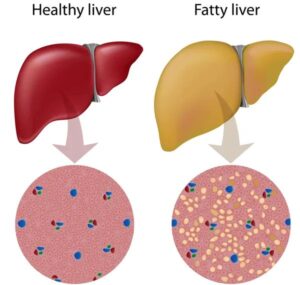
Nonalcoholic Fatty Liver Disease: What Is It?
NAFLD is a liver disease that affects people who drink little to no alcohol and is typified by the buildup of fat in the liver cells. The spectrum of this disorder includes nonalcoholic steatohepatitis (NASH), which is more severe than plain fatty liver (hepatic steatosis) and can result in cirrhosis, fibrosis, and even liver cancer if untreated.
Important risk factors for NAFLD consist of:
Obesity: One of the main risk factors for NAFLD is excess body weight, especially around the belly.
Type 2 diabetes and insulin resistance both raise the risk of developing non-alcoholic fatty liver disease (NAFLD).
Metabolic Syndrome: A big waist circumference, high blood pressure, high blood sugar, and excessive cholesterol or triglyceride levels all increase the risk of non-alcoholic fatty liver disease (NAFLD).
Modern sedentary lifestyles and high-calorie diets, which contribute to obesity and metabolic syndrome, are the main causes of the rising prevalence of NAFLD worldwide.
Knowing About Serum Uric Acid
Purine metabolism, which happens when the body breaks down purines included in a variety of diets, particularly those high in proteins, produces uric acid as a byproduct. Uric acid is typically eliminated by urine after being filtered by the kidneys. Hyperuricemia, or elevated blood uric acid, can occur, however, if there is an overabundance of uric acid in the blood or if the kidneys are unable to filter it efficiently. Although gout and other metabolic disorders have historically been connected to elevated uric acid levels, this association is becoming more and more pronounced.
The Relationship Between Serum Uric Acid Levels and NAFLD
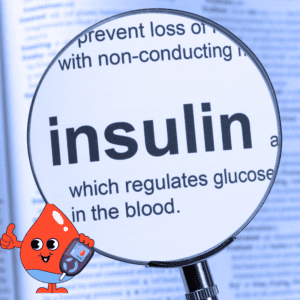 1. Insulin Resistance: The Fundamental Factor
1. Insulin Resistance: The Fundamental Factor
One of the main mechanisms in the development of NAFLD, insulin resistance, is linked to elevated blood uric acid. Elevated blood levels of uric acid seem to decrease the body’s sensitivity to insulin, which hinders the breakdown of glucose and raises blood sugar levels. This insulin resistance causes the liver to produce more fatty acids, which contributes to the buildup of fat and the advancement of non-alcoholic fatty liver disease.
 2. Inflammation and Oxidative Stress
2. Inflammation and Oxidative Stress
Oxidative stress, which happens when the body’s antioxidants and free radicals are out of balance, is associated with elevated blood uric acid. Reactive oxygen species (ROS) and inflammation can be produced when uric acid reaches liver cells, further harming liver tissue and exacerbating nonalcoholic fatty liver disease. Actually, the progression from simple fatty liver (steatosis) to NASH, where inflammation and liver cell destruction are more severe, depends heavily on oxidative stress.
3. Dysfunction of the Endothelium
Endothelial dysfunction, or the compromised function of the blood vessel’s inner lining, is also linked to elevated uric acid levels. Numerous cardiovascular problems, which are especially prevalent in people with NAFLD, are linked to endothelial dysfunction. Reduced blood flow to the liver due to blood vessel dysfunction may accelerate the development of liver disease.
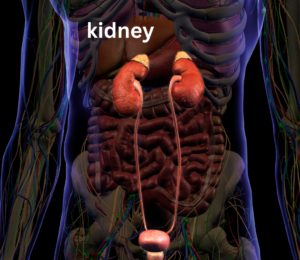 4. Renin-Angiotensin System (RAS) activation
4. Renin-Angiotensin System (RAS) activation
According to research, the renin-angiotensin system (RAS), a hormonal mechanism that controls blood pressure and fluid balance, may be activated by high serum uric acid. By encouraging the production of scar tissue in the liver, RAS activation can raise blood pressure and cause liver fibrosis, a severe stage of nonalcoholic fatty liver disease.
Research-Based Evidence: Serum Uric Acid as a NAFLD Marker
Elevated serum uric acid levels are strongly linked to an increased risk of non-alcoholic fatty liver disease (NAFLD), according to multiple studies:
Even after controlling for variables including BMI, blood pressure, and lipid profiles, a 2019 study that was published in the journal Hepatology revealed that elevated uric acid levels were substantially linked to an increased risk of developing non-alcoholic fatty liver disease (NAFLD).
A dose-response association was suggested by research conducted in 2020, which showed that those with greater serum uric acid levels were more likely to develop NAFLD and also tended to have more severe manifestations of the illness.
According to a 2021 meta-analysis that looked at data from more than 20 studies, people with high uric acid levels had a higher chance of developing advanced liver disease, and hyperuricemia was found to be an independent risk factor for NAFLD.
Controlling Serum Uric Acid Levels to Lower the Risk of NAFLD
Treating hyperuricemia may help manage or possibly prevent NAFLD because of the connection between elevated serum uric acid levels and the disease. The following techniques may help lower serum uric acid levels and hence lessen the risk of NAFLD:
1. Modifications to Diet

Limit or Steer Clear of Purine-Rich Foods: Red meat, organ meats (such as liver), and shellfish are among the foods that are high in purines.
Boost Your Fiber Intake: Whole grains, fruits, and vegetables are good sources of fiber that can help lower blood sugar levels and lessen the strain on the liver.
 2. Keep Your Weight in Check
2. Keep Your Weight in Check
One of the biggest risk factors for both hyperuricemia and NAFLD is obesity. Even a small weight loss (5–10% of body weight) can improve liver function by lowering serum uric acid levels and liver fat.
 3. Engage in Regular Exercise
3. Engage in Regular Exercise
Exercise can improve liver health, lower serum uric acid levels, and lessen insulin resistance. The risk of NAFLD can be effectively managed by regular exercise (at least 150 minutes of moderate activity per week).
 4. Steer clear of excessive alcohol intake
4. Steer clear of excessive alcohol intake
Alcohol can worsen liver damage and raise uric acid levels, even if NAFLD is not alcoholic in nature. Limiting or abstaining from alcohol can help the liver’s oxidative stress and inflammation.
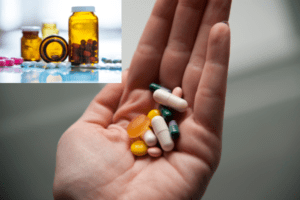 5. If necessary, think about taking medication.
5. If necessary, think about taking medication.
To reduce uric acid levels, doctors may occasionally prescribe drugs like allopurinol. Before beginning any medicine, it is imperative to speak with a healthcare provider, particularly if you already have liver issues.
Concluding remarks
The significance of managing one’s health holistically is highlighted by the connection between serum uric acid and NAFLD. In addition to lowering the risk of NAFLD, lowering excessive uric acid levels can also enhance other areas of metabolic health. It’s becoming more and more clear that dietary changes, regular exercise, and lifestyle changes continue to be some of the best strategies for lowering the burden of non-alcoholic fatty liver disease (NAFLD) as research reveals the complex relationships between metabolic pathways.
Monitoring blood uric acid levels is an important step towards a better liver and a healthier life, regardless of whether you’re managing nonalcoholic fatty liver disease (NAFLD), at risk, or just looking to enhance your metabolic health.
 https://analytics.google.com/analytics/web/#/analysis/p405220706
Skip to content
https://analytics.google.com/analytics/web/#/analysis/p405220706
Skip to content 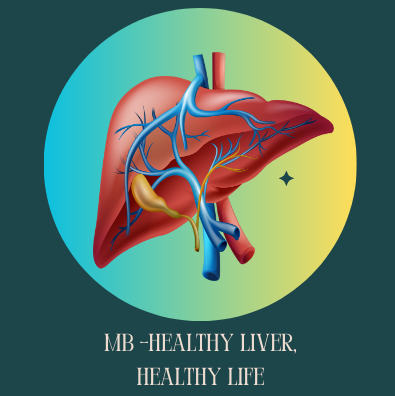
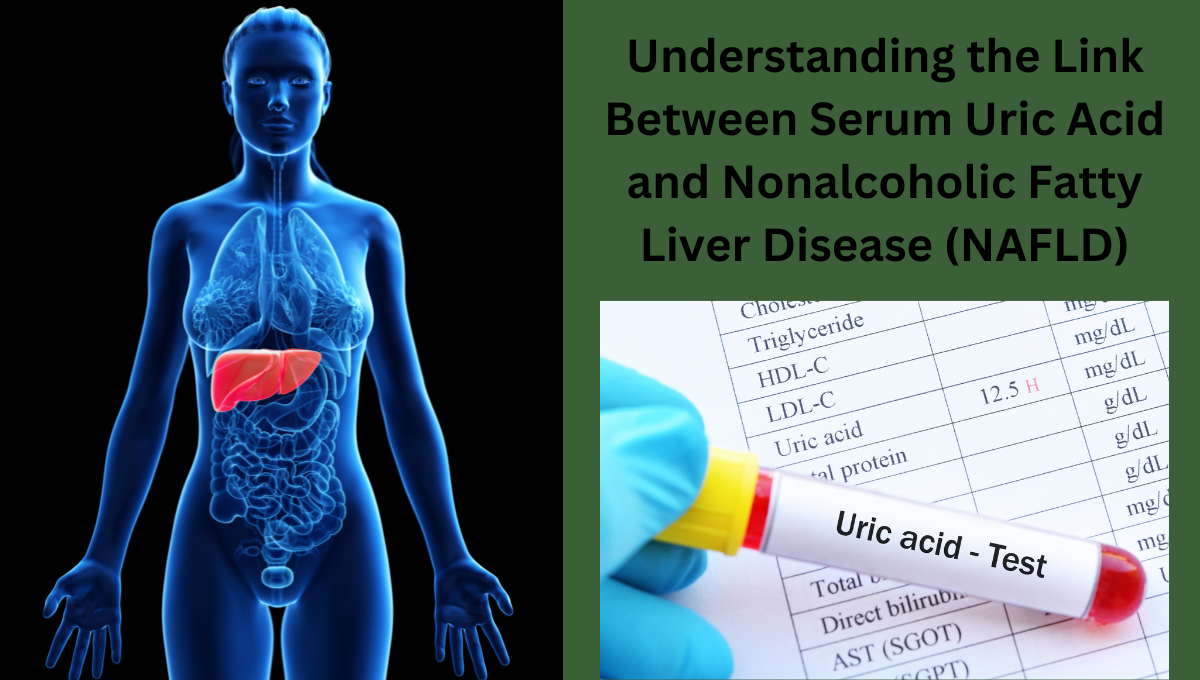
2 thoughts on “Understanding the Link Between Serum Uric Acid and Nonalcoholic Fatty Liver Disease (NAFLD)”